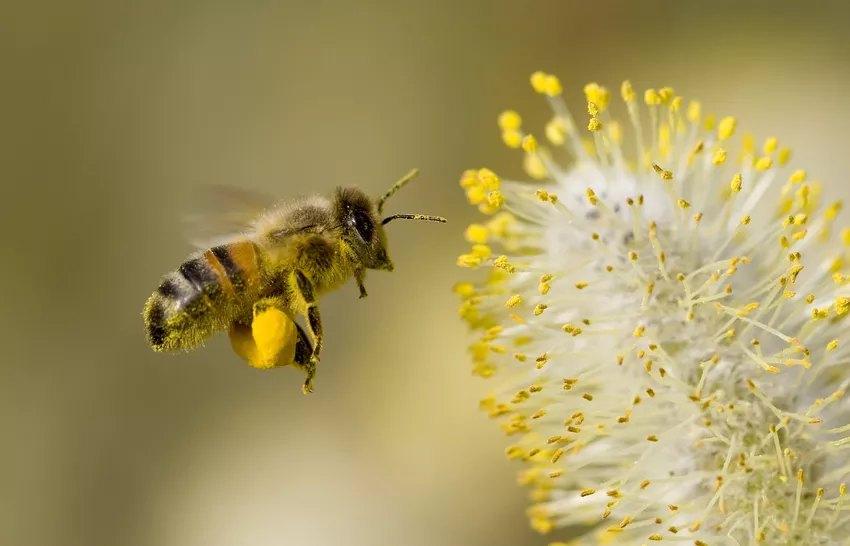What is bee pollen, where does it come from and how do you use it? We get to the bottom of all these questions here.

Various associations quickly come up with pollen: some think of the sniffling nose, others associate it with a food that they sprinkle on muesli, smoothies and the like. The tiny, little balls already impressed the ancient Egyptians, who considered them what we now call “superfood”.
Bee pollen
In the following, we explain what bee pollen actually is, why the small balls are so he althy and how they are used correctly.
What is bee pollen?
The small pollen are a by-product of beekeeping. Every time a flower is visited, dust particles from the flower get stuck in the hair coat of the bees. It is their male pollen that is spread this way. After each foraging flight, the busy bees' hair coat is sufficiently covered with tiny pollen. Back in the hive, they have to squeeze through a small entrance hole and a special net, part of the pollen is stripped off and ends up in the so-called "pollen trap".
As already mentioned, this is the male sperm cell of the flower. A single pollen grain is microscopic. Only when they agglomerate does a round to oval, golden yellow to brown globule form. Nature has arranged the pollination quite cleverly, because the male pollen is carried from flower to flower in a completely automated manner so that the female flowers are pollinated.
What do bees need pollen for?
While most flying insects spread pollen “unconsciously”, honey bees behave differently. Some of the collectors fly out to collect nectar and honeydew, others to organize water or tree sap. However, another group of forager bees flies out in order to obtain pollen in a targeted manner. Because pollen is the most important source of food for the offspring, as it contains an enormous amount of protein and bees need protein for rearing, just like any other living being.

Bees have so-called "pollen pants" on their hind legs, in which they pack their collected material. So that the dust-like pollen is not lost on the way, bees fill a small drop of honey into the pollen pantries. Every collection action is accompanied by a zealous demeanor, in which they push the pollen deep into the baskets, forming the well-known globules.
Different variety of bee pollen
No two bee pollen grains are the same. They differ both visually and in taste. The background: bees fly to different flowers, collect different amounts per flower and combine the dust grains with their honey, which also varies depending on the origin. All pollen have one thing in common: They are considered a he althy dietary supplement.
What makes pollen so he althy?
Pollen contain a wide range of nutrients. Vitamins B, C, D and E are present as well as numerous minerals and trace elements. The small grains are enriched with magnesium, zinc, phosphorus or iron. In addition to the enzymes and antioxidants, the plant proteins are probably one of the main reasons why pollen is considered an added value for human nutrition. About half of them are made up of essential amino acids. Interestingly, the carbohydrates found in bee pollen do not affect blood sugar levels, which is an important factor for people struggling with their weight.
Pollen taste and use
Bee pollen tastes tart-sweet - a pleasant mixture. They refine yoghurt, muesli or salad. To see an effect, pollen should be consumed every day. But: Bee pollen may be efficient and easily digestible, but it has no therapeutic effect. Nevertheless, eating them has an effect, as is the case with any he althy food. They are interesting for people who want to eat he alth-consciously, for active people and athletes as well as for people who are under "electricity".

When buying pollen, pay attention to where it comes from. There are cheap suppliers whose pollen most likely comes from large bee breeding farms. These products should be avoided. Then it's better to spend a euro more to get bee pollen from beekeepers that work as naturally as possible, like the pollen from beegut. These come from Latvia from a region with blooming landscapes. So exactly the habitat thatbees (and therefore humans) need.
If you want to help the bees with their pollen search, you will find the best bee-friendly flowers for your garden or balcony here.